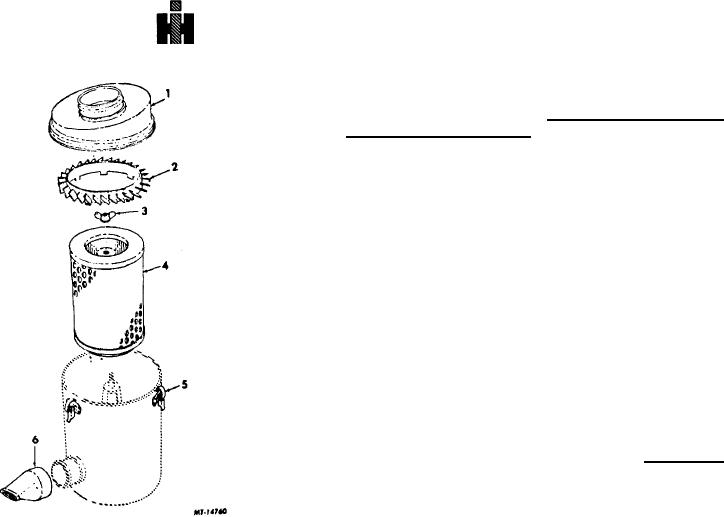
TRUCK SERVICE MANUAL
Compressed Air:
Direct a jet of dry, clean air against inside or clean air
side of the filter element. Holding nozzle about six
inches away from element, move nozzle up and down,
rotating element until no dust is visually being removed
(approxi-mately 10 minutes). Direct air perpendicularly
to pleats using 100 psi maximum air pres-sure. Do not
damage element with the air flow from nozzle.
Washing:
Filter element can be cleaned by washing in water
using a nonsudsing detergent. Proportions are 2 oz. of
cleaner to 1 gallon of water. For best mixing results use
a small amount of cool tap water, then add to warm (70
- 140F) water to give proper proportions. The warmer
(100F) the solution, the better the cleaning. Soak
element for 15 minutes, then rotate element back and
forth with clean water. If a hose is used to wash or rinse
the filter, be careful not to rupture the paper with the
water jet. Rinse the filter element until drain water be-
comes clear. Proper rinsing is very important. Let filter
element air dry completely before using. Do not use
compressed air for drying.
IMPORTANT: After cleaning filter element using either of
the above recommended methods, inspect the filter
element for damage:
1. Dust on downstream (inside) or clean air
Fig. 2 Heavy Duty Dry Type Air
side,
Cleaner
2. Slightest ruptures.
3. Damaged gaskets.
Legend for Fig. 2.
Ruptures can be detected on any dry type element
1
COVER, Air Cleaner
by placing a light inside the filter element. Inspection of
2
RING, Fin
the element on the outside will then disclose any holes or
3
NUT, W/Gasket, Wing
ruptures. Any hole in the filter element, even the
4
ELEMENT, Air Cleaner
smallest, will pass dust to the engine and cause engine
5
CLAMP, Cover (3 Required)
wear.
6
VALVE, Evacuator
456

